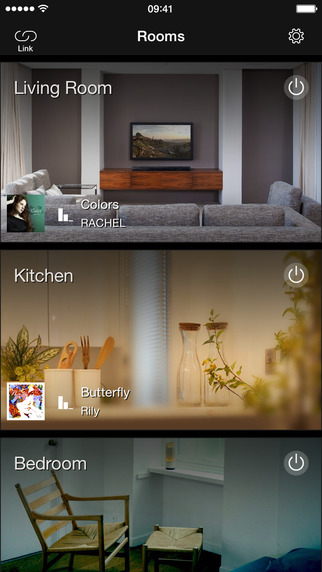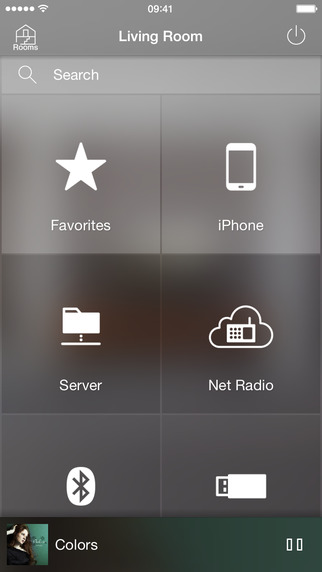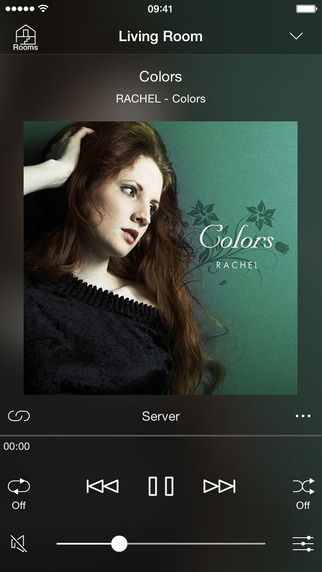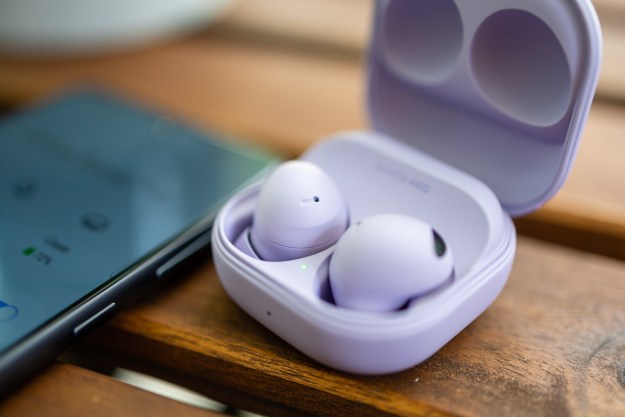Yamaha MusicCast is one of the most promising multiroom audio systems we’ve seen since Sonos got cooking.
Last summer, Yamaha invited us to a small event in Los Angeles where the company unveiled its new vision for multiroom audio, MusicCast. With 22 individual components at launch, Yamaha’s new system is designed to incorporate anything and everything you plug into a Yamaha receiver, plus Wi-Fi-ready speakers and sound bars to be controlled from anywhere in the home through a central app.
More recently, MusicCast has rolled out of the showroom and into living rooms, injected into several new pieces of Yamaha gear including the first dedicated MusicCast speaker, the WX-030. We had a chance to spend some quality time with a pair of WX-030s, along with a Yamaha sound bar, creating a three-piece starter set for a would-be MusicCast arsenal. Is MusicCast ready for primetime? Follow us below to see how Yamaha’s new venture stacks up to the likes of Sonos and others.
The players
WX-030 ($250)
Though the name may be less than inspiring, the WX-030 is crafted into a sleek capsule that pleases the eye as readily as it folds into the background of your chosen decor. The speaker currently comes in two colors: jet black, or white with platinum accents. The former will likely fit in perfectly with most of your home-theater gear, while the latter is right at home in the kitchen or even the bathroom, if that’s where you choose to groove.
The speaker is designed to be controlled through the MusicCast app, but it also has easily accessible touch capacitive control keys for volume, Wi-Fi/power, and play/pause. Sound performance in the upper register is clean and clear, if not a little bright (in that signature Yamaha way), with a relatively decent punch of bass for the size. Drivers under the wrap-around metal screen include one of Yamaha’s signature 1 ⅛-inch “beam” drivers, alongside a 3 1/2-inch woofer and a passive radiator to add some heft in the bass, making it a bit more powerful than Sonos’ comparable Play:1, though the Play:1 is a little smoother and more detailed overall.
YSP-1600 ($500)
While we would have enjoyed piling on several more pieces to the set — especially the gorgeous NX-N500 powered monitors — the addition of Yamaha’s YSP-1600 sound bar served as a capable hub for sourcing hardwired audio, as well as adding a bit more power and authority to our triple-speaker setup. The bar is pretty basic in design: A 40-inch long rectangle in all black that stretches back a hefty 5 ½ inches. The unit is loaded with eight of those same 1 ⅛-inch beam drivers, along with dual 3 ¼-inch “subwoofers” stretched out at the ends.
There are several connection options, including an optical digital input, HDMI input and outputs, an analog 3.5mm input, and even a subwoofer out — a welcome addition for those looking to get closer to theater-quality bass response. The bar does relatively well on its own, offering presence in the upper register, and more potency than you’d expect in the low end for an all-in-one design. That said, we wanted more detail and better resonance in the middle of the sound, especially when it comes to dialog, which gets a bit tinny at times. And if we’d had an available subwoofer lying around to add to the mix, we would have used it.
Setup
If you’ve spent any time with multiroom audio systems (or any Wi-Fi connected speakers, for that matter) you know that connecting to your home network is one of the most frustrating parts. Systems vary in their ease of entry. Sonos, for instance, uses a one-and-done push button system that’s an absolute breeze to get going, while most others call for more time-consuming methods, including some that require hardwiring your phone to each speaker.
MusicCast sits somewhere in the middle of the pack. Once you’ve downloaded the app, pushing the button on top of the speaker initiates a quick walkthrough to connect to your router. Unfortunately, each speaker must be introduced to your router individually, which is much slower than Sonos, and also lags behind LG’s MusicFlow system. Once the router is initiated, however, the system is pretty painless to get up and running.
The app
Although it can be a little hard to navigate at the onset, the MusicCast Controller app boasts some very intuitive features that separate it from the pack once you get going. Like any multiroom app, you can of course send sound to each speaker from the same source, or multiple sources, control the volume of each speaker independently, and name each individual zone. But the MusicCast app also tacks on some pretty cool innovations.
MusicCast proved virtually flawless at sending our favorite tunes to multiple speakers from streaming apps.
Unlike some multiroom systems we’ve encountered (which shall remain nameless) it’s extremely easy to customize each MusicCast zone from the app, either with stock names (like Bedroom or Kitchen), or your own custom entries. You can also choose from a wide selection of stock photos to represent each zone, or even grab personal photos from your own library.
Linking and unlinking zones is easy enough thanks to the dedicated “Link” key, and there are some thoughtful control features built in, such as an auto-delay when raising the volume to prevent you from accidentally blasting out a speaker (or your ears) with an errant swipe. You can also access basic receiver control functions through the app, and even pull up Yamaha’s full receiver Controller system, all from inside MusicCast.
That said, we did have a few minor issues over the course of a few weeks. While the app is designed to allow you to power on each speaker from your phone, some were occasionally unresponsive, forcing us to power on the speaker manually (First World problems). We also had some trouble getting grouped speakers to play ball with Spotify at times: Since Spotify requires you to control devices through its own app, we were sometimes forced to bounce between apps to get volume to sync up with a new speaker group. Once all speakers were linked up properly, however, they held steady.
Finally, we had one instance in which the app simply couldn’t find a previously connected speaker. However, that could easily be chalked up to network issues with our router.
System performance
MusicCast proved virtually flawless at sending our favorite tunes to multiple speakers from streaming apps, with no audible delay, allowing us to walk from room to room engulfed in sonic bliss. And thanks to Yamaha’s clever “beam” drivers, the overall character of the sound was handed off pretty smoothly between pieces — not an easy task between a sound bar and satellite speakers.
With few exceptions — including those mentioned in the app section above — we spent a very pleasant couple of weeks bouncing around the house as MusicCast filled the halls with sound. And since MusicCast offers hi-res playback at up to 24-bit/192kHz, those who have collected hi-res tracks will be rewarded for their efforts, though we recommend stepping up to the high-end components like the NX500s if you spend more time with FLAC tracks than Spotify streams.
We were also very intrigued by MusicCast’s ability to plug virtually anything into a receiver or sound bar and play it throughout the home — something many competing systems don’t offer at present. However, there are a few slight caveats that users coveting this cool feature will want to consider before buying in.
While it’s extremely easy to send TV audio (and other sources) to any speaker on the network, delay issues between speakers and a hardwired source make it difficult (if not downright annoying) to listen to anything on a wireless speaker within shouting distance of the source device. This cropped up when we wanted to play the AFC Championship game from the YSP-1600 in the living room and also have it blasting in the kitchen, resulting in an echo effect fit for a Bowie space epic. Yamaha also doesn’t presently allow MusicCast to form a wireless 5.1 setup on your network. But if the company does want to add 5.1 in the future, the hardwired delay will need to be addressed.
That being said, even without digital delay, speakers separated by notable distances will incur their own delay through the natural physics of sound, making it much more effective to separate devices by a wall or two. And MusicCast is only at a slight disadvantage without true wireless 5.1 surround at present. Sonos offers it, and Samsung and DTS’ Play-Fi are both prepping updates to make this a reality, but the vast majority of systems don’t have it.
As MusicCast evolves, we hope Yamaha will address the hard-wired source delay in future updates to make the system even more versatile. Even if that doesn’t happen, though, there are plenty of useful applications for MusicCast’s ability to spread wired-in audio to up to 10 different wireless devices — especially for those with a lot of rooms to fill. Heck, thanks to Yamaha’s Bluetooth integration, you can even route sound from a single MusicCast speaker to any Bluetooth speaker — MusicCast or otherwise. And that kind of versatility is a very solid foundation upon which Yamaha’s nascent system can build.
Conclusion
It may not be perfect, but Yamaha’s versatile MusicCast system is one of the most promising additions to multiroom audio we’ve encountered since Sonos got cooking. Yamaha will have to keep improving on MusicCast if it wants to take on the king of multiroom head on — including adding 5.1, and more satellite speakers to partner with the WX-030. That said, MusicCast’s mix of versatility, viability, and ubiquity throughout the Yamaha line is more than enough to get our attention. For those considering a multiroom setup, or merely a receiver upgrade, MusicCast is a compelling reason to consider buying into home audio Yamaha’s way.
Highs
- Highly versatile system for Wi-Fi and Bluetooth streaming
- Solid, latency-free playback from streaming sources
- High-resolution audio support
- A/V receivers and sound bars can stream virtually any source
- Smart, feature-packed app
Lows
- Hard-wired sources delayed in wireless playback
- No 5.1 surround at present
- Speakers occasionally unresponsive in remote startup












